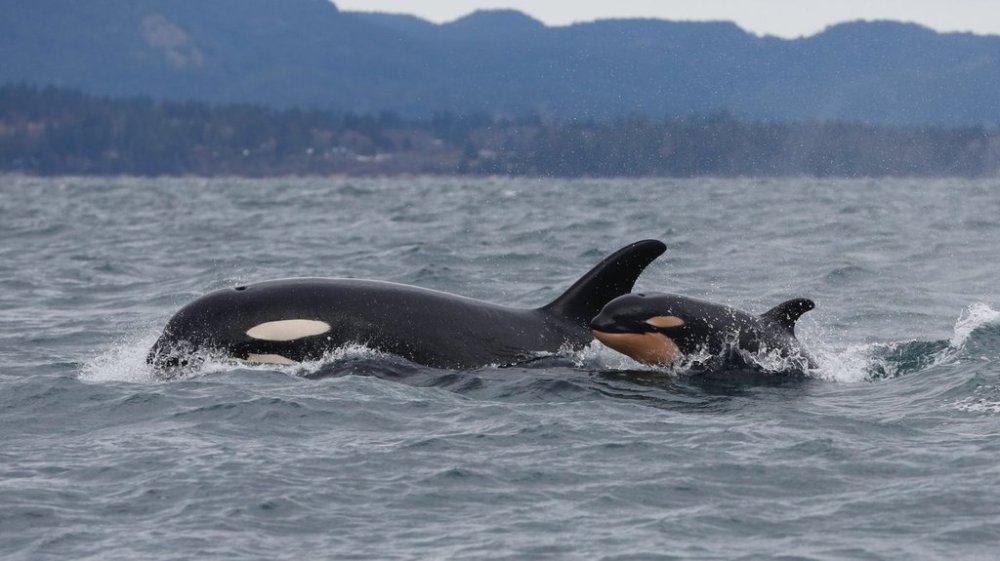Science
Survey Reveals Southern Resident Orcas Face Critical Decline

The latest survey of the endangered southern resident killer whales indicates a troubling trend toward their potential disappearance. According to Michael Weiss, director of the Center for Whale Research, the population remains stagnant and is gradually declining without enhanced protective measures. As of July 1, 2025, the overall population stands at 74 whales, a slight increase from last year. However, the outlook is grim, as factors such as dwindling chinook salmon, pollution, and increased maritime traffic pose serious threats to their survival.
Weiss highlighted that the decline in chinook salmon, a critical food source for the whales, directly impacts their population. “We’re not talking about southern residents going extinct in the next five years, but we are talking about a fairly good chance of at least one of the three pods being gone within the next 50 years,” he stated in an interview with The Canadian Press. This sentiment underscores the urgency of implementing long-term habitat restoration, particularly for chinook spawning grounds, and adjusting fisheries management.
The recent survey revealed that while four calves were born among the three distinct pods, only two survived. Additionally, an adult male from K pod, referred to as K26, went missing in late summer, marking a significant loss for the population. Weiss emphasized that this situation exacerbates the existing issue of low genetic diversity within the southern residents, which is crucial for their resilience against diseases.
The survey shows a troubling reproductive trend among the whales. Of the 27 males of reproductive age, only a small number are actually breeding. The youngest male documented to have reproduced was aged 15, while Weiss considers the prime breeding age to be in the early 20s. The male K26, the oldest in his pod, had successfully reproduced at least once, further highlighting the strain on the population.
In contrast, southern resident females are reproducing at a significantly lower rate than their northern counterparts, producing calves at approximately half the rate. Additionally, the mortality rate for calves remains alarmingly high, with about 50 percent not surviving their first year. If these patterns continue, the population is set to decline steadily.
Particularly concerning is the state of K pod, which now comprises only 14 members, the lowest number recorded in the survey’s 50-year history. Weiss pointed out that the K pod has not produced a successful birth since 2022, which raises alarm bells about their future viability. In contrast, J pod has shown some signs of growth, although the overall mortality rates for adults could shift this trend rapidly.
The survey also reported a stark demographic difference between the southern and northern residents, with only 11 immature whales younger than 10 years old in the southern population, representing just 15 percent of their total. In comparison, immature orcas account for 47 percent of the northern resident population, which is currently thriving.
Weiss noted that the southern residents depend heavily on chinook salmon, which have themselves been declining in numbers. He explained that these whales often receive the “last crack” at the salmon migrating from northern waters to Pacific coast rivers, making it increasingly challenging for them to find enough food.
To improve the situation, Weiss advocates for restoring salmon habitats and relocating chinook fisheries away from critical ocean and estuarine areas. He stated, “If you’re fishing out in the ocean where everything’s mixed up, it’s really hard to avoid taking fish from these declining populations.”
Additionally, the urbanization of the southern residents’ habitat complicates their hunting efforts. Weiss illustrated this by stating, “They’re trying to hunt in these areas where cruise ships and freighters are coming through every day. It’s trying to find food on a highway.”
In summary, while the southern resident killer whales saw a marginal increase in their population, the overarching trends paint a concerning picture. Without significant intervention and protective measures, their future remains precarious. This report, highlighting the challenges faced by these iconic marine mammals, was first published on October 13, 2025.
-

 Politics4 weeks ago
Politics4 weeks agoSecwepemc First Nation Seeks Aboriginal Title Over Kamloops Area
-

 World5 months ago
World5 months agoScientists Unearth Ancient Antarctic Ice to Unlock Climate Secrets
-

 Entertainment5 months ago
Entertainment5 months agoTrump and McCormick to Announce $70 Billion Energy Investments
-

 Science5 months ago
Science5 months agoFour Astronauts Return to Earth After International Space Station Mission
-

 Lifestyle5 months ago
Lifestyle5 months agoTransLink Launches Food Truck Program to Boost Revenue in Vancouver
-

 Technology3 months ago
Technology3 months agoApple Notes Enhances Functionality with Markdown Support in macOS 26
-

 Lifestyle3 months ago
Lifestyle3 months agoManitoba’s Burger Champion Shines Again Amid Dining Innovations
-

 Top Stories2 months ago
Top Stories2 months agoUrgent Update: Fatal Crash on Highway 99 Claims Life of Pitt Meadows Man
-

 Politics4 months ago
Politics4 months agoUkrainian Tennis Star Elina Svitolina Faces Death Threats Online
-

 Sports5 months ago
Sports5 months agoSearch Underway for Missing Hunter Amid Hokkaido Bear Emergency
-

 Politics5 months ago
Politics5 months agoCarney Engages First Nations Leaders at Development Law Summit
-

 Technology5 months ago
Technology5 months agoFrosthaven Launches Early Access on July 31, 2025





















